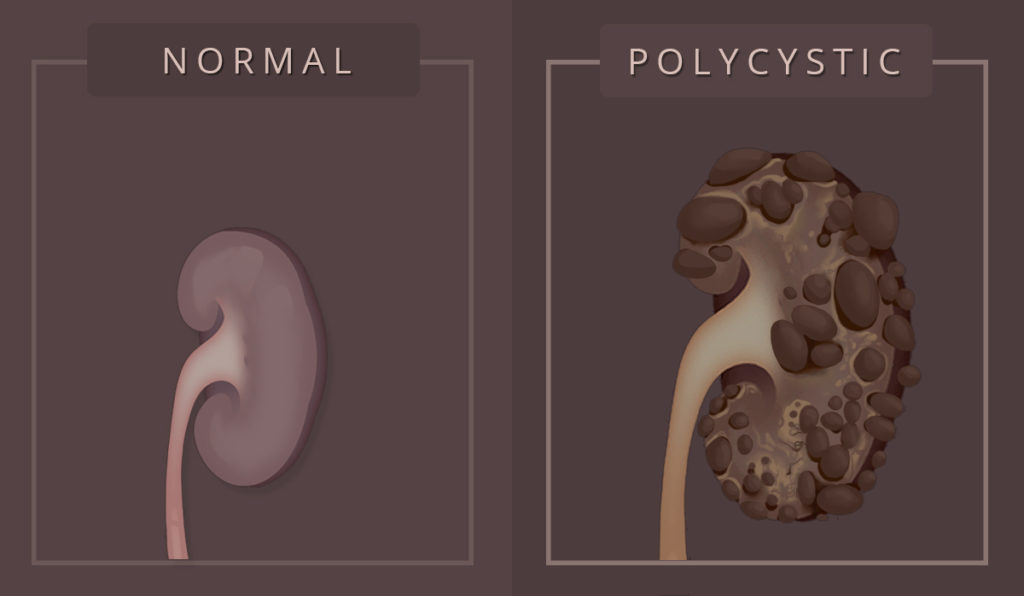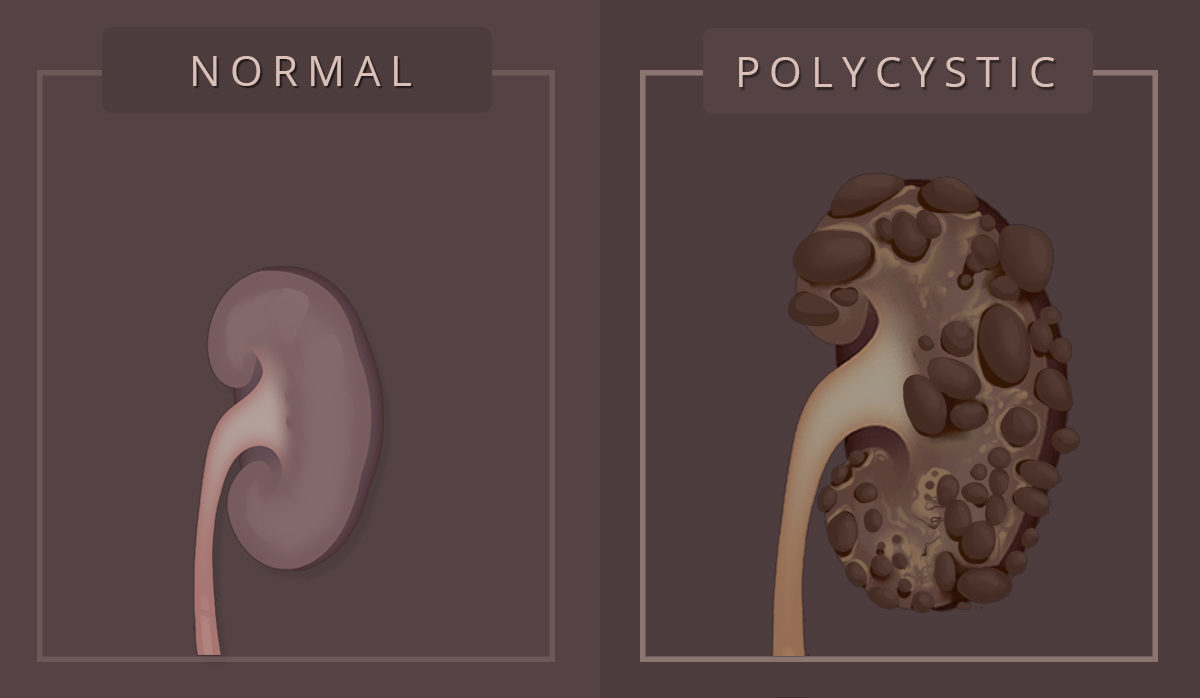Polycystic Kidney Disease (PKD) is a genetic disorder that causes fluid-filled cysts to form on the kidney. There are two different types of PKD. Combined, they are responsible for 5-10% of the patients who are diagnosed with End-Stage Renal Disease on dialysis.

Types of PKD
There are two types of PKD: Autosomal Dominant and Autosomal Recessive. Autosomal Dominant PKD is where the defective gene is passed on. Because it is a dominant gene, a child of a parent who has ADPKD has a 50% chance of inheriting the gene. ADPKD usually shows no symptoms until adulthood. The second type of PKD is Autosomal Recessive PKD. This type of PKD is much less common and the mutated gene has to be present in both parents. It is usually diagnosed in infancy, sometimes up to adolescence in mild cases.
Cause of PKD
These genetic mutations cause alteration in a protein called polycystin. This protein is found within the cells of the kidneys. When the protein is altered, the individual functioning units of the kidneys, called the nephron, form cysts that continue to grow over time, enlarge the kidneys. As the kidneys enlarge, a patient might start feeling abdominal pain. These growing cysts will compress the functioning nephrons leading to a reduction in the filtration rate eventually causing End Stage Kidney Disease.
Symptoms of PKD
Some other PKD symptoms include blood in urine and high blood pressure. Additionally, some other cysts might form in the liver, spleen, pancreas, and even in the seminal vesicles in males. PKD can even cause leakage in the mitral valve in the heart and diverticulitis in the colon. In the recessive type, images from an ultrasound might show larger than normal sized kidneys and infants might experience failure to grow.
If you experience any of these symptoms, depending on your age and family history, an ultrasound of your kidneys will help with the diagnosis. If you have any questions about PKD, feel free to call us at (714) 435-0150 to schedule a consultation!

